Assynt deer dispute: The myths and the facts
Statement from the John Muir Trust to dispel some of the myths surrounding its decision to increase deer culls in Assynt following fierce opposition from a vocal minority demanding the status quo for sports shooting estates.
Contents
Background
Why are we stepping up our cull?
Stag shooting and the rural economy
Is Quinag a lost cause?
Why not fencing?
Changing times
Background
Since the start of this year, the John Muir Trust has come under some fierce criticism in north-west Scotland following our successful application for an out-of-season and night licence to assist us step up our deer cull on the Quinag estate to meet our ecological objectives. Our intentions were communicated clearly in advance in writing to all major stakeholders who might have an interest in our decision.
The decision to increase our deer cull was not taken lightly. It has to be seen, firstly, in a national and international context. Few people other than extreme conspiracy theorists would doubt the gravity of the climate emergency. The red needle is approaching danger point, with potentially catastrophic health, social, economic and environmental consequences across the globe. Simultaneously, we are descending into a grave ecological crisis, which threatens the life support systems upon which we all depend.
The Scottish Government is taking action on a number of fronts to ensure that, as a developed nation, we play our part in standing up to this twin crisis. Its draft biodiversity strategy published in late 2022 specifically expresses a national objective to “drive down and deliver substantially reduced deer densities across our landscapes”.
By European standards, Scotland has a very large landmass proportionate to our population – six and half times greater than that its nearest neighbour England. Most of that land is classified as severely disadvantaged. It is of extremely low agricultural productivity, but it has immense potential for carbon sequestration and biodiversity recovery. It is a staggering fact that Scotland’s uplands – those vast areas covering our landscape, where the main economic activity is deer and grouse shooting – have the potential to remove more greenhouse gases from the atmosphere each year than the equivalent of removing every one of Scotland’s petrol and diesel cars from our roads.
Yet as things stand, our native tree cover is a mere four per cent of our landmass. Around 80 per cent of our peatlands are degraded and act like giant power stations, pumping destructive gases into the atmosphere every second of every day. One of the major obstacles to turning that around is the high deer densities across our rural land. They prevent the restoration of healthy habitats by devouring burgeoning new habitats, from tree saplings to grasslands, montane scrub and heather. They trample peatlands and destroy the surface vegetation leaving the soils exposed and vulnerable to further deterioration.
Many landowners accept their responsibility and are seeking to rectify the damage inflicted in the past. Others are intent on perpetuating the status quo inherited from the Victorian era: where land is managed for a single purpose, sport shooting, on behalf of a powerful minority interest group. Some have been caught in the middle: they seek to manage their land in the public interest but are inhibited by the pressure that bears down upon them from surrounding sporting estates. That is where the John Muir Trust is coming from, in Assynt and in other areas.
^ Red deer at too high densities prevents the restoration of healthy habitats by devouring burgeoning new habitats, from tree saplings to grasslands, montane scrub and heather. Photo by Fran Lockhart.
Why we are stepping up our cull?
As the leading charity that seeks to protect and restore wild places for the benefit of people, climate and nature, we have a responsibility to the nation as a whole to steward the land we manage to the highest environmental standards. We recently commissioned a baseline survey of net CO2 emissions on the properties we look after. The results in some areas were sobering. The Quinag estate, we discovered, is currently emitting almost 5,000 tonnes of carbon dioxide equivalent per year.
For the John Muir Trust that is unacceptable. Quinag has the potential to go far beyond net zero to become a carbon sink, removing and storing carbon dioxide from the atmosphere. And that is before we start on the depleted biodiversity in a landscape that once would have been flourishing with life: woodlands, grasslands, wetlands, heathlands, montane scrub, tall herb communities, animals, plants, insects, mosses, fungi and other species.
We take no pride in that. Since taking over the ownership of Quinag almost 20 years ago, we have been constrained from taking the action we need to reverse a century of damage. We have no control over deer numbers on neighbouring estates, and we have been pressurised into bowing to the demands of others to minimise culling on Quinag itself. Consequently, we have been forced into a long-term damage limitation exercise. We now intend to move forward to take proactive measures to restore habitats, slash carbon emissions and reconstruct damaged ecosystems.
We understand that may have some knock-on consequences for neighbouring estates, just as the activities of neighbouring estates have consequences for the land that we manage. We have never tried to dictate our solutions to neighbouring landowners, even when we consider their land management activities to be causing environmental damage. And we do not expect to be dictated to by others with private interests.
We are happy to be accountable for our land management by agencies whose role is to represent the public interest, whether that be NatureScot, the Scottish Land Commission or the Scottish Government. The John Muir Trust is among the strongest supporters of land reform in rural Scotland, and believes that all landowners should have responsibilities to the wider national interest rather than to their own private ambitions. It is in that spirit that we are acting.
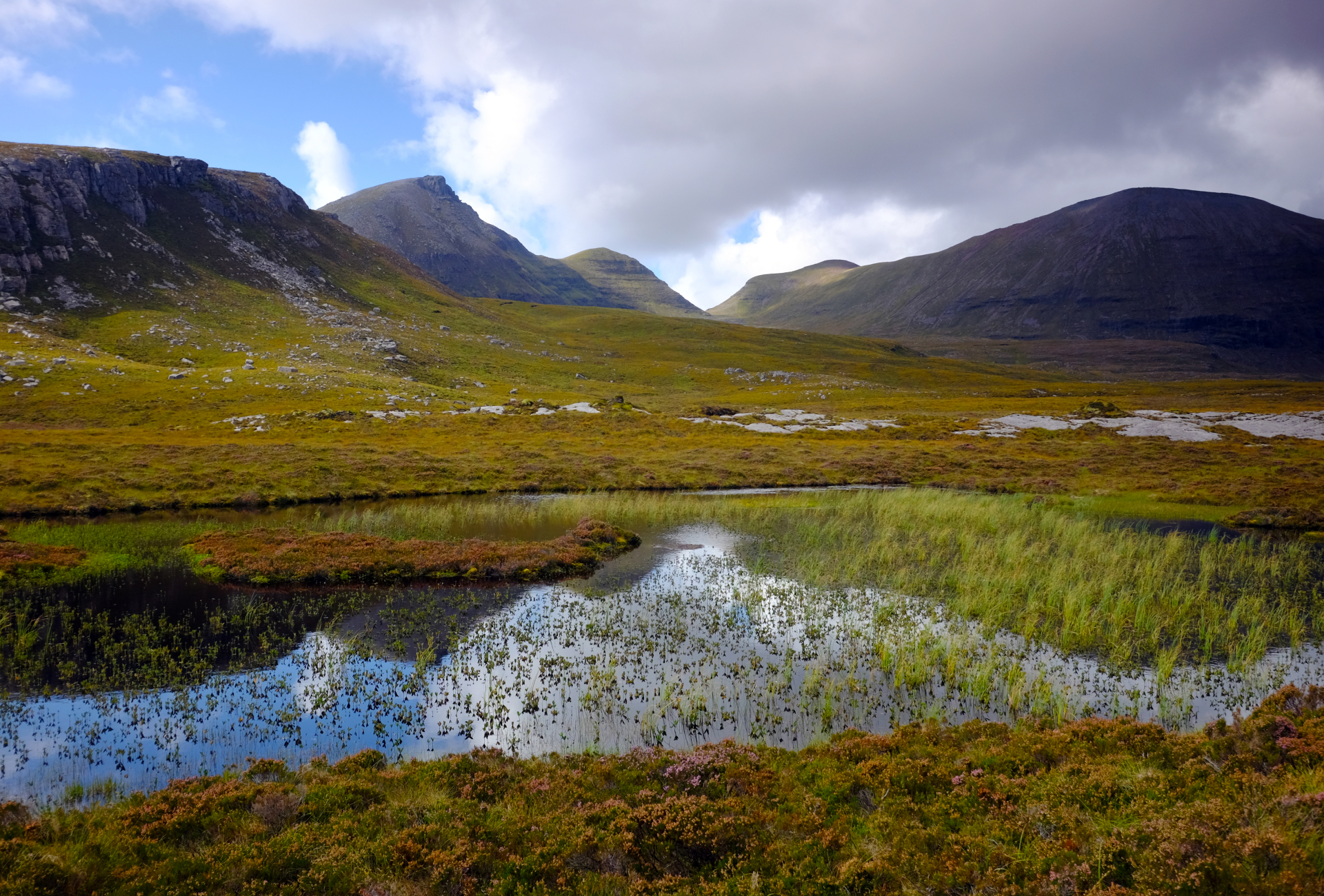 ^ The Quinag estate; a popular destination for visitors who come to walk the triple buttress mountain, also represents a signficant opportunity to lock in carbon and increase biodoversity in the public interest. Photo by Kevin Lelland.
^ The Quinag estate; a popular destination for visitors who come to walk the triple buttress mountain, also represents a signficant opportunity to lock in carbon and increase biodoversity in the public interest. Photo by Kevin Lelland.
Stag shooting and the rural economy
At the same time, we reject the scaremongering and negativity that has, sadly, been deployed by some of those striving to defend the status quo. The notion, for example, that by reducing deer numbers on Quinag, the John Muir Tust is jeopardising jobs in neighbouring estates. There is no evidence to suggest that variations in the number of stags shot in a season impacts on the number of stalkers employed.
It is a verified fact that deer numbers have risen relentlessly across Assynt over the past decade. In 2011, the deer count figures across the Assynt Peninsula Subgroup stood at 1,383. There was no deer count the following year, but in 2013, the figure had increased to 1,418. It is now 1,921 (based on NatureScot helicopter count spring 2022) – an increase of well over 538, which is a 40 per cent increase. There is no evidence that these increased deer numbers have created any new jobs or brought in any additional income to the area. And neither is there any evidence that reducing deer numbers will lead to job losses.
The economic arguments against reform of deer management are especially hollow. A recent report commissioned by the Scottish Government (Socio-economic Impacts of Moorland Activities in Scotland, October 2020) carried out several in-depth case studies measuring the economic balance sheet of different forms of land management. It included an analysis of a large deer stalking estate covering 38,500 ha in the Scottish Highlands. It found that its deer stalking operation ran at a £116,950 annual loss and employed five ‘deer-specific’ FTEs. This works out at one full time job per 77 square kilometres. In north-west Scotland, the John Muir Trust supports almost four times as many FTE jobs per square km over the land we manage.
We would add that annual losses from deer stalking are par for the course rather than an aberration. In 2017, the Scottish Government reintroduced local business rates for sporting estates, with the expectation the revenues would then be ringfenced to support the Scottish Land Fund, which assist community buy-outs. To our knowledge not a penny was paid into the fund. The reason: most sport shooting estates were able to demonstrate that their business was run either at a loss, or below the £35,000 annual profit threshold which would make them liable.
There is another side to the story, however. According to commercial land agents, every stag shot on a private estate will add between £25,000 and £50,000 to the value of that estate, depending on the numbers of points on the antlers. For big private estates, the value of sport shooting does not derive from weekly, monthly or even annual revenues from the activity itself. Instead it is captured indirectly in rising land values, which have negative side effects for the rural economy as a whole – not least in spiralling land prices which reinforce the unequal concentration of landownership across rural Scotland.
The Assynt Crofters Trust, because it comprises a collection of smaller individual landholdings subject to crofting rules and regulations, cannot make these lucrative capital gains. The people who reap the benefit from this arrangement are large private – and in many cases absentee – landowners.
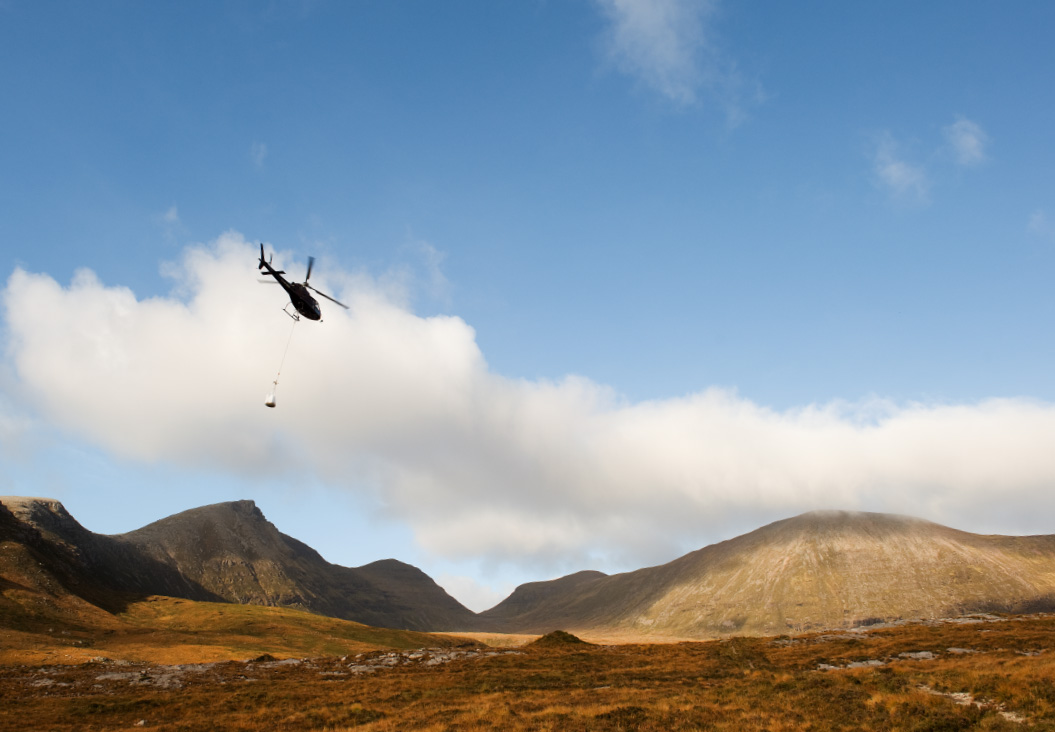 ^ The Trust has invested more than £350,000 into the Assynt area in the past five years and maintains an active membership of more than 1,000 people in the Highlands. Photo shows a helicopter lifting bags of stone for path repairs, by Iain Brownlie Roy.
^ The Trust has invested more than £350,000 into the Assynt area in the past five years and maintains an active membership of more than 1,000 people in the Highlands. Photo shows a helicopter lifting bags of stone for path repairs, by Iain Brownlie Roy.
Is Quinag a lost cause?
In a recent lengthy paper under the provocative title John Muir Trust: At it Again, Victor Clements essentially argues that most of Quinag, apart from a few fragments, is a lost cause for nature and climate, with no potential for restoration due to geography and climate.
There is material in the paper that we would not disagree with. We do not dispute, for example, his contention that there is improvement in the condition of the Ardvar woodland outside our boundaries. We welcome and are encouraged by the assurance that fencing has played at best only a minor part in that progress. That is encouraging. We also note that much of the improvement is in close proximity to the road, and therefore more likely to be avoided by deer in favour of woodland that extends deeper into the wilder land within the Quinag estate.
None of the information documented by Victor Clements in relation to Ardvar negates the fact that deer are continuing to inflict severe damage on the part of the woodland that extends into our land, and across the wider habitat of Quinag.
As a ‘woodland advisor’ based in Perthshire, Victor Clements states that, other than a fragment, woodland does not exist on Quinag outwith the designated Site of Special Scientific Interest at Ardvar. From this, he concludes that the deer cull proposed on Quinag is ‘malicious’ because there is little or no possibility of environmental gain. Other experts dispute that, as do our own staff on the ground who have a comprehensive and intimate knowledge of Quinag.
There may be no polygons displaying native woodland on Quinag as Victor points out, but nature recovery does not depend on polygons. Right now, 96 per cent of Scotland’s land is devoid of native woodland. We also know from place names, maps and other sources that even in relatively recent history, native woodlands were a significant part of Scotland’s landscapes.
On Quinag itself, place names include Alltan na Salach, small burn of the willow; Bad na Fearaig, place of the alder; and Doire Cuillin, holly grove. Ecological records also show evidence of downy birch, wych elm, hazel, rowan, willow, aspen, juniper, holly and oak on the site, which indicates that the landscape is capable of supporting recovery of a wide range of woodland species.
Victor’s 17-page ‘analysis’ of Quinag was written without any recourse to the biological data held by the John Muir Trust, and without any discussion with our staff who work on the ground. Had he done so, he might have a less pessimistic view of the long-term prospects for nature recovery on the mountain. He would also understand more clearly the impact of deer browsing.
Every year since 2016, we have monitored around 150 tagged seedlings of hazel, holly, willow, birch, rowan and aspen scattered across nine separate areas of Quinag. Since 2008, we have also monitored dwarf shrub heath. The monitoring demonstrates beyond all reasonable doubt that grazing pressures from deer, is preventing woodland recovery on Quinag.
Moreover, a woodland habitat is more than just trees. No-one would claim that Quinag could ever be swathed entirely in native woodland. When we talk about woodland restoration on Quinag, we mean in the broad sense of a flourishing and diverse ecosystem that includes scattered trees, grassland, heather, wet heath, peatland and montane scrub. The baseline carbon study carried out at Quinag found that the biggest single source of carbon emissions is from overgrazed and trampled wet heath. Another survey, by the University of Leeds Earth Sciences Department, estimates that across the Quinag Wild Land Area, ecological restoration could potentially sequester almost 880,000 tonnes of C02 equivalent over the course of the next century. That works out at 8,800 tonnes of C02 annually, which is close to the total carbon footprint of the entire population of Assynt.
If current carbon prices remain stable (and they are likely to increase in the future) that could potentially bring £175,000 a year into the local area from Quinag alone. Of course, that does not mean piles of cash, because to achieve that level of ecological recovery would require employing more people with the necessary skills. But it could make a major contribution in terms of jobs and spending – and potentially much more if other landowners locally also chose to go down the same road.
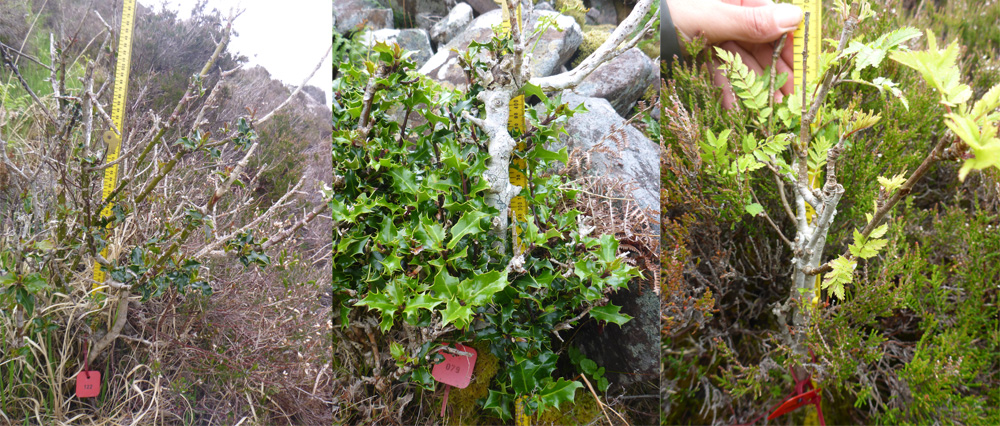
^ These images from field work at Quinag show marked seedling damage from browsing. Damage evident from bare stems and multi-shooted growth.
Why not fencing?
As an alternative to reducing deer numbers, we have been told to erect fencing around our property. Deer fences present major ecological disadvantages. First, they create an artificial environment within the perimeter area. Wet heath, for example, which is the major source of carbon emissions on Quinag, is damaged by overgrazing. It can also be damaged by undergrazing, as can a number of other habitats. Grazing abandonment creates an unbalanced ecosystem. Seeds thrive where there is a low and sporadic level of grazing that creates disturbance and prevents a dense sward from taking over.
We would further add that deer are naturally woodland animals which benefit from the food and shelter those trees and vegetation provide. In Scotland, where red deer have adapted to bare hillsides, they are undernourished compared to their bigger, stronger and healthier woodland counterparts elsewhere in Europe. Winter mortality figures are high. Erecting deer fences around ecological restoration sites will compound the harm to deer. And it would multiply grazing impacts outside the fences by forcing deer out of fenced habitats, thus storing up even bigger problems for the future.
If Scotland is to meet its targets to reduce greenhouse emissions set by the Climate Change Committee (which advises all four governments of the UK), that will require major change in land use across our uplands. Fencing at scale would mean erecting rings of steel across our countryside at a cost of countless millions of public and private money. Do we really want to go down that route just so that sport shooting visitors can return home with a fine pair of antlers?
If the sporting estates are so eager to see deer fences erected, then why don’t they fence the boundaries of their estates to keep deer contained so they can shoot them at their convenience? Why do sporting estates demand that other landowners pay to erect unsightly and unwanted fences on their land, simply to protect their private sporting interests?
This debate over deer culls is not new or unique. Organisations and individuals representing private sport shooting estates have a long history of intemperate outrage whenever serious efforts have been undertaken by public and charity organisations to reduce deer densities for ecological restoration. Emotive headlines replete with terms such as ‘carnage’, ‘killing fields’, ‘bloodbath’ and ‘massacre’ have been frequently bandied about, with no sense of irony, by those whose business is trophy hunting. The frenzied language has invariably been underpinned by the same negative arguments that Victor Clements and others have deployed against the John Muir Trust in Assynt. At Creag Meagaidh, Glenfeshie, Mar Lodge, Abernethy and other estates, there were dire warnings of wholesale job losses along with sweeping assertions that the deer culls were gratuitous because they would have no environmental benefits.
The sceptics were wrong on both counts. Bare hillsides with isolated fragments of dying woodland were transformed into vibrant, inspiring landscapes that are universally acknowledged today as resounding ecological success stories. They support more jobs and economic activity than ever before. And no-one today is calling for them to be turned back into ‘traditional’ sport shooting estates.
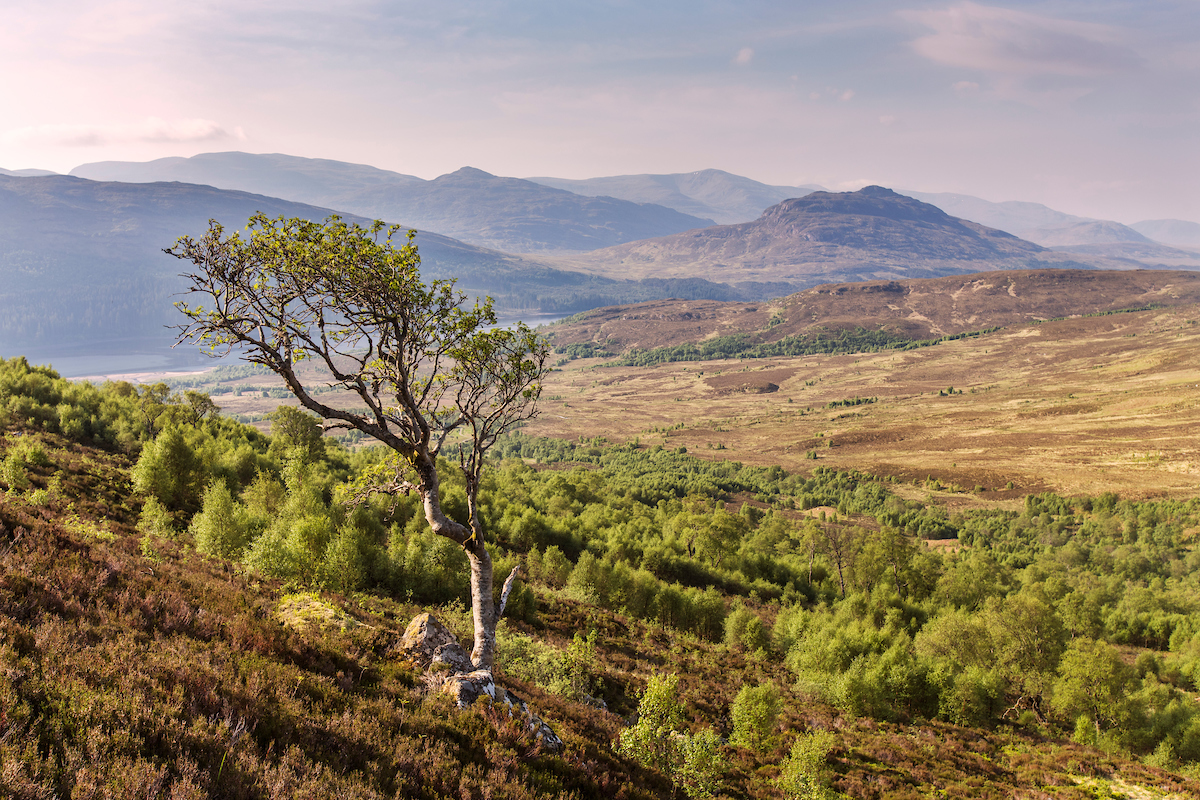 ^ Regenerating birch and rowan trees on Creag Meagaidh NNR by Mark Hamblin/scotlandbigpicture.com
^ Regenerating birch and rowan trees on Creag Meagaidh NNR by Mark Hamblin/scotlandbigpicture.com
Changing times
Times are changing, and we believe that we are in tune with public opinion. In 2021, we worked jointly with academics, animal welfare organisations and the international data gathering company Qualtrics – which has partnerships with some of the world’s biggest companies, including Microsoft, IBM, IPSOS and Deloitte – on a survey to help us understand wider social attitudes towards deer culling. Over 1,000 people were recruited, weighted to approximate the Scottish adult population in terms of age, gender identity, ethnicity and geographical location, with a deliberate over-representation of the rural population. The survey set a list of nine deer shooting objectives to gauge which were most and least acceptable. They included measures such as road accident risk reduction; woodland expansion; peatland protection; sport shooting; low-cost venison; and deer starvation.
In all categories bar one, a resounding majority accepted the need to shoot more deer for the specified objectives. For reducing Lyme disease risk, the figure was 75 per cent. To reduce deer mortality from starvation in winter, the figure was 74 per cent. To allow forests and woodland to recover, the figure was 73 per cent. To aid peatland recovery, the figure was 68 per cent. To reduce road accidents the figure was 68 per cent. To address climate change by storing more carbon, the figure was 61 per cent. To provide low-cost venison, the figure was 59 per cent.
Only one objective was rejected. Just 27 per cent supported shooting more deer to provide recreational stalking opportunities, with 56 per cent opposed. The survey found no significant division between urban and rural Scotland in six of the nine objectives. In the other three – road accidents, peatland protection and low-cost venison – there was stronger support for deer reduction measures among the rural population.
We should make it clear that the John Muir Trust has never opposed deer stalking. In Assynt we recently funded and constructed a community deer larder at Glencanisp. We work with Ullapool High School on an annual ‘Hill to Grill’ programme to educate school students in the entire process of producing venison from the hillside to the dinner plate. We initiated a local women’s stalking group. We are clear that our environmental objectives on Quinag can co-exist side-by side with sport shooting on other estates with no threat whatsoever to other people’s livelihoods.
We understand that change can be difficult – and we have done more than most other landowners in advocating at national level a just transition towards net zero in our most sparsely populated areas. See for example our recent booklet Just Transition and Wild Places, which sets out more than 30 specific policy recommendations aimed at reviving, economically, socially, culturally and environmentally, our most fragile rural communities, particularly in the Highlands.
We also practise what we preach. In 2020, the John Muir Trust initiated the North West 2045 project, a community-led venture covering 3,000 square kilometres of the north west with ambitions that include repopulation, modern infrastructure and services, quality education, a flourishing natural environment, community renewables, affordable housing and reinvigorated local democracy. The project has now been adopted as one of the Scottish Government five pilot Regional Land Use Partnerships.
The John Muir Trust is proud of its record in Assynt and across Scotland. We have five staff living and working in the north west, who are highly respected within their communities and make a major contribution to the social and economic fabric of the area. We have invested £350,000 in Assynt in the past five years, with more to follow in the near future.
Victor Clements and the Scottish Gamekeepers Association, who have been voluble in their criticism of the John Muir Trust, are employed by private sporting estates whose owners prefer to remain in the shadows. The John Muir Trust in contrast is open, transparent, democratic and accountable. We are a public charity, with an elected board of Trustees and answerable to the charity regulator OSCR. Our charitable objectives are clear. We have no fear of robust debate. Our door is always open to dialogue. We simply ask that communications are respectful, and based on facts and evidence.
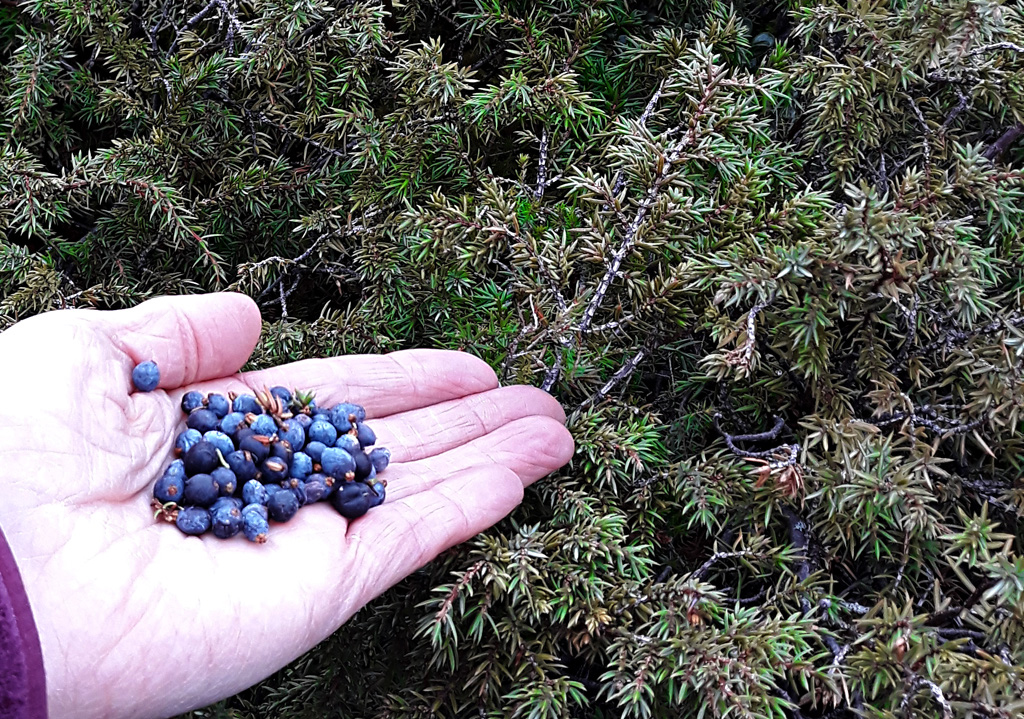 ^ Juniper berries found at Quinag are one of many species found in ecological records and place names that show the potential of the land if it is given the freedom to repair itself. In Scotland, facilitating regeneration requires a reduction in deer numbers. Photo by Chris Puddephatt.
^ Juniper berries found at Quinag are one of many species found in ecological records and place names that show the potential of the land if it is given the freedom to repair itself. In Scotland, facilitating regeneration requires a reduction in deer numbers. Photo by Chris Puddephatt.
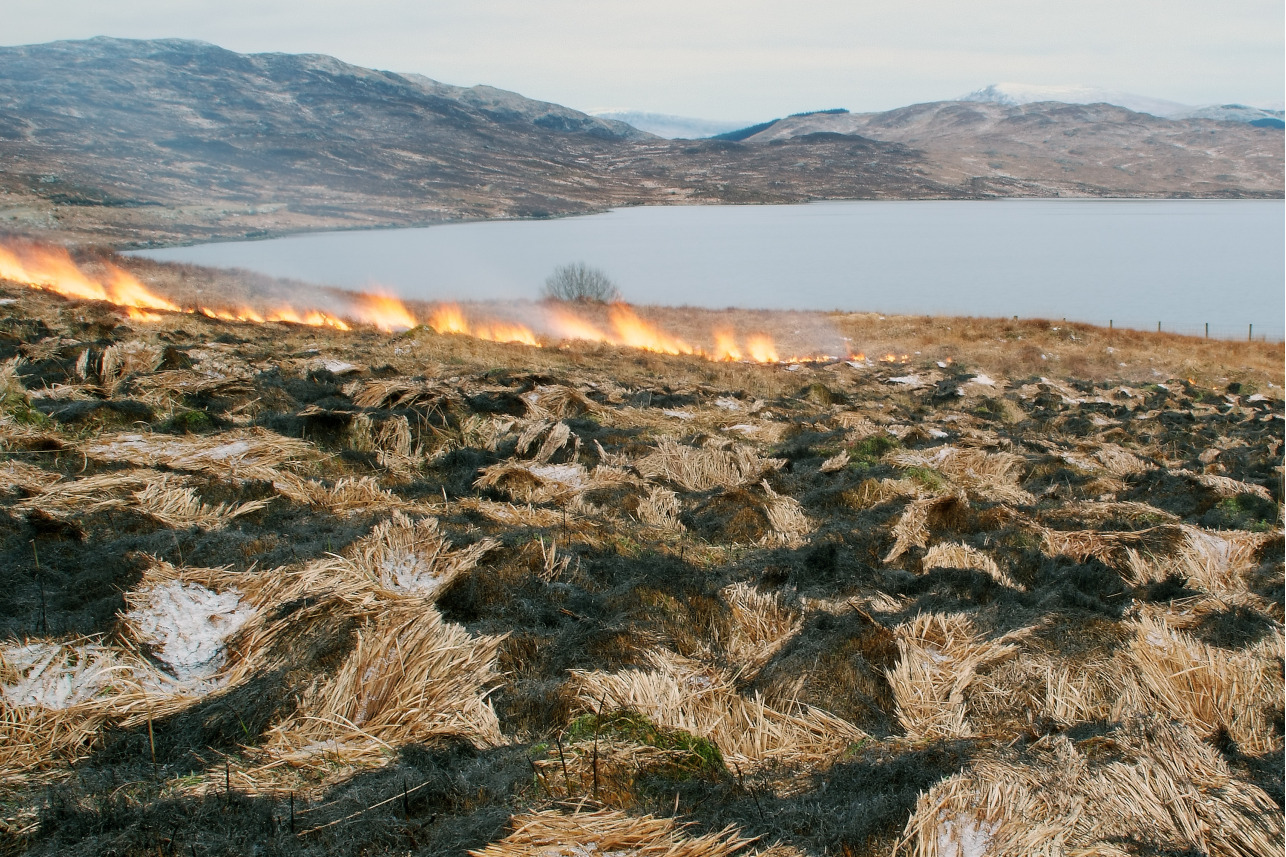
Help us defend wild places and campaign for their protection
Please donate to our campaign fund